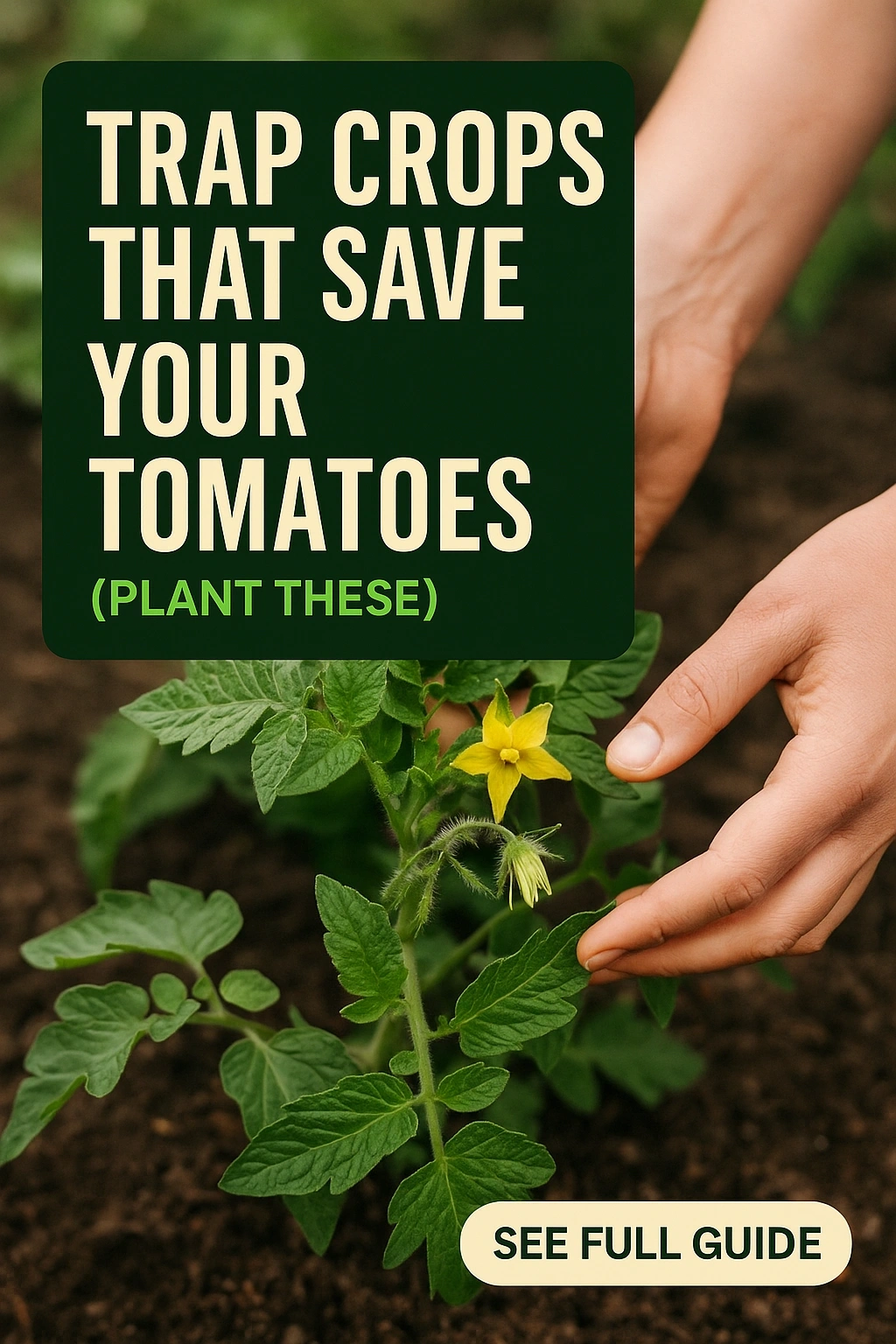
Trap crops serve as a strategic solution for tomato growers, effectively diverting pests away from precious tomato plants. By planting these specific crops nearby, gardeners can create a natural barrier that protects their tomatoes from harmful insects. This approach not only safeguards the tomato yield but also promotes a healthier ecosystem within the garden. Discover how to implement trap crops effectively and enhance your gardening experience.
What Are Trap Crops?
Trap crops are specific plants grown primarily to attract pests away from more valuable crops, such as tomatoes. These plants either lure pests due to their appealing scent or serve as a host for insects that might otherwise target your main crops. By strategically planting these crops, you can minimize pest damage and reduce the need for chemical pesticides.
Choosing the Right Trap Crops for Tomatoes
Selecting the appropriate trap crops is crucial to the success of this pest management strategy. The ideal trap crops should be attractive to the same pests that threaten your tomatoes but should not compete for nutrients or space. Consider the following options that are commonly used alongside tomato plants.
Common Trap Crops for Tomatoes
- Marigolds: These vibrant flowers attract aphids and nematodes, keeping them away from your tomato plants.
- Nasturtiums: Known for attracting whiteflies and aphids, nasturtiums can be planted near tomatoes to divert these pests.
- Radishes: Effective against root maggots, radishes can serve as a trap crop in gardens where tomatoes are prone to these pests.
- Sunflowers: These tall plants attract a variety of pests, including beetles, away from tomato plants.
- Borage: This herb not only attracts beneficial insects but can also deter certain pests like tomato hornworms.
How to Implement Trap Cropping in Your Garden
Implementing trap cropping involves careful planning and execution. Start by assessing your garden layout and the specific pests that threaten your tomato plants. Once you have identified these, follow these steps to implement an effective trap cropping strategy.
Steps for Effective Trap Cropping
- Site Selection: Choose a location for your trap crops that is near your tomato plants but not so close that they compete for resources.
- Timing: Plant your trap crops at the same time as your tomatoes or slightly earlier to ensure they mature and attract pests first.
- Interplanting: Consider interplanting trap crops among your tomato plants for better pest diversion.
- Monitoring: Regularly check both the trap and main crops for signs of pest activity. Remove any heavily infested trap crops to prevent pests from spreading.
- Rotation: Rotate the trap crops each season to maintain their effectiveness and prevent pests from adapting.
Maintaining Healthy Trap Crops
Healthy trap crops are essential for an effective pest management strategy. Maintaining these crops involves regular care and observation to ensure they remain attractive to pests. Here are some tips to keep your trap crops thriving.
Best Practices for Trap Crop Maintenance
- Watering: Ensure that trap crops receive adequate water, especially during dry spells, to maintain their health and attractiveness.
- Fertilization: Use organic fertilizers to promote growth without introducing harmful chemicals that might affect your tomatoes.
- Pest Control: Monitor trap crops for pests and diseases, and remove any affected plants promptly to avoid spreading issues to your tomatoes.
- Regular Harvesting: If your trap crops are edible, consider harvesting them regularly to encourage new growth and maintain their role as pest attractants.
Potential Challenges with Trap Cropping
While trap cropping can be a highly effective pest management method, it is not without challenges. Understanding these challenges can help you prepare and adapt your strategy accordingly.
Common Issues to Consider
- Competition for Resources: Trap crops may compete with tomato plants for sunlight, water, and nutrients if not planted with care.
- Unexpected Pest Attraction: Sometimes, trap crops may attract pests you did not anticipate, which could lead to additional problems.
- Maintenance Needs: Trap crops require their own maintenance, which can be time-consuming, especially in larger gardens.
- Effectiveness Variability: The effectiveness of trap crops can vary based on environmental conditions and pest populations.
Frequently Asked Questions (FAQs)
What is the best time to plant trap crops for tomatoes?
The best time to plant trap crops is around the same time as your tomato plants, or slightly earlier. This allows the trap crops to mature and attract pests away from your tomatoes before they become vulnerable.
Can I use trap crops for other vegetables besides tomatoes?
Yes, trap crops can be used for a variety of vegetables. The key is to choose trap crops that attract the specific pests threatening your other crops.
How do I know if my trap crops are effective?
Monitor your tomato plants for signs of pest damage. If you notice fewer pests on your tomatoes and increased activity on your trap crops, this indicates that the trap cropping strategy is working effectively.
Can I use chemical pesticides on trap crops?
It is advisable to avoid chemical pesticides on trap crops, as they are meant to attract pests. Using chemicals can deter beneficial insects and negate the purpose of the trap crops.
What should I do with trap crops after they have served their purpose?
Once trap crops have attracted pests, you can remove and dispose of them to prevent any pests from migrating back to your tomato plants. If they are edible, consider harvesting them for consumption.
